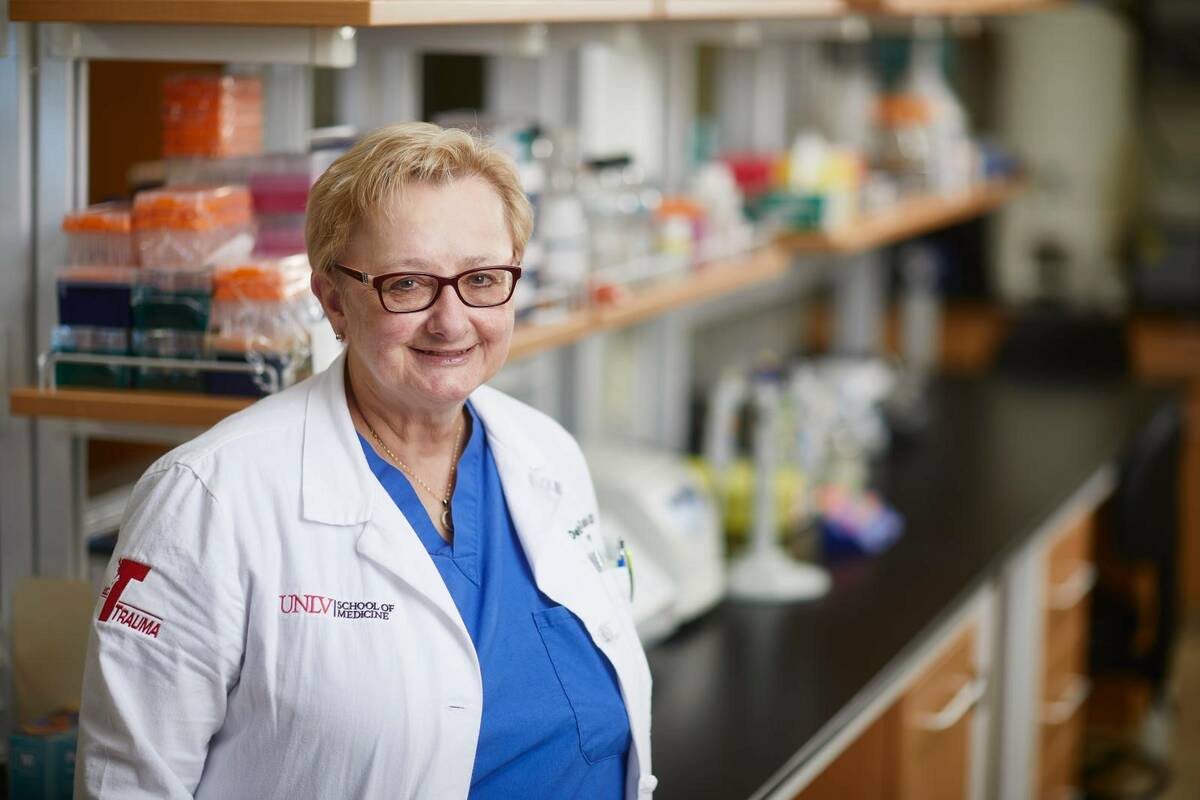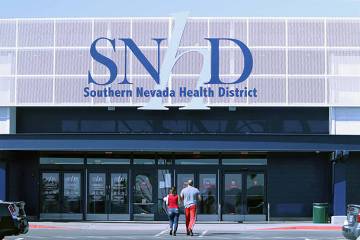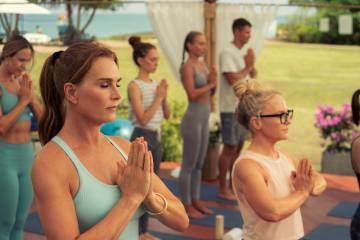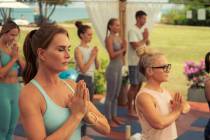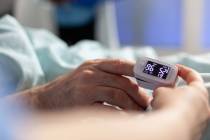Las Vegas trauma surgeon shares lessons learned from Oct. 1 shooting
Trauma surgeon Dr. Deborah Kuhls was nearing the end of a 12-hour shift at University Medical Center when she heard over the hospital radio there had been a shooting on the Strip and to expect five to 10 patients. Then it was 10 to 20 patients. Minutes later, the guidance was to prepare for 50 to 100 patients.
This was Oct. 1, 2017, when a gunman opened fire from the 32nd floor of Mandalay Bay on the crowd below attending a country music festival. Sixty-one people died, including the gunman, and hundreds were injured.
UMC treated 104 shooting victims in its trauma unit and emergency room that night. “The only people who died were those who arrived dead,” said Kuhls, who at the time was the medical director of the trauma unit and led the night’s response.
Immediate activation of the hospital’s disaster plan, which called for setting up a triage area outside the hospital, saved lives, Kuhls, a professor of surgery at the Kirk Kerkorian School of Medicine at UNLV, said Tuesday.
She has co-authored a new study, published in the Journal of the American College of Surgeons, with recommendations for the medical response to a mass shooting based on lessons learned.
Participants in the study were medical first responders, emergency physicians and surgeons who responded to mass shootings in Orlando, Fla.; Sutherland Springs, Texas; Parkland, Fla.; El Paso, Texas; Dayton, Ohio; and Las Vegas. Their recommendations were gleaned at a conference in September 2021 hosted by the National Center for Disaster Medicine and Public Health at Uniformed Services University.
A key recommendation was for hospitals to adopt a modified triage plan specific to mass shootings to get patients the right care quickly. That means considering the location of gunshot wounds and prioritizing care based on potential deadliness of an injury.
When going from zero to 20 patients in five minutes, “The system needs to do the most good for the most people,” Kuhls said. “In a mass shooting, it’s critically important to (identify) the people who are going to die unless you get them immediate attention.” This sorting process is continuous, she said, as the conditions of patients changes.
The study also emphasizes the value of military and civilian partnerships to increase surge capacity in a mass shooting. Doctors and surgeons from Nellis Air Force Base helped Oct. 1 shooting victims at area hospitals including UMC, Kuhls said. For military medical personnel, who need to constantly prepare for war, “The closest thing on the civilian side in a non-war situation is trauma,” she said.
The study identifies a role for the public to play in the medical response to a mass shooting. Bystanders had applied potentially lifesaving tourniquets using belts or fabric to patients arriving at UMC, stanching the flow of blood, Kuhls said.
Stop the Bleed kits, which gained traction after the Sandy Hook Elementary School shooting, should be made available at events and public places, Kuhls said. Training on how to use the kits is offered at hospitals and other locations.
Texas, she noted, has mandated such kits and training at its schools.
Only about 20 percent of mass shooting victims who need to go to the hospital will be transported by emergency personnel, and the remainder by members of the public, Kuhls said.
That means the public needs to know where to go to get the appropriate level of care and to avoid overloading any one hospital. This information could be communicated in real-time by 911 dispatchers or via mobile app, and in first aid and trauma training, the study recommended.
Contact Mary Hynes at mhynes@reviewjournal.com or 702-383-0336. Follow @MaryHynes1 on Twitter.



